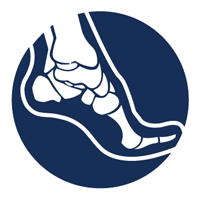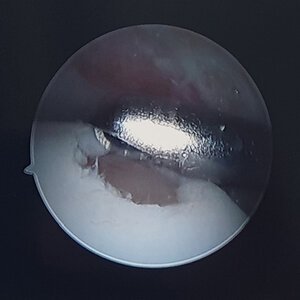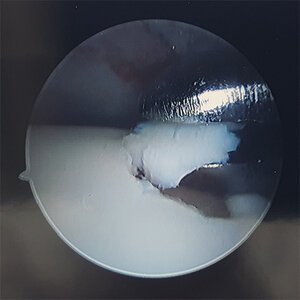What is Ankle Arthritis Pain and can it be cured?
Ankle or foot arthritis is an inflammatory degenerative condition affecting the cartilage of the joints. It is primarily caused by wear and tear of the joints and the major condition that causes ankle pain and stiffness which can make it difficult to walk or perform daily activities. It is one of the most common causes of sore feet, pain, and disability. Patients with foot or ankle arthritis usually complain of walking and movement pain especially in the ankle and toe.
In normal joints, articular cartilage provides lubrication at the end of the bones which allows it to glide over each other and minimalize friction during movement. As the cartilage degenerates, the rough surfaces of the bones are exposed and when they come in contact with each other, they rub and produce pain, stiffness, and inflammation.
Ankle arthritis is more common in the elderly as the joints begin the wear and the body cannot keep up with it repairing the damage. However, it may occur at any age and can be brought on by other issues such as trauma or joint deformity.
What are the causes of ankle arthritis and ankle pain?
Movement of the ankle or foot joints from activities such as walking, running, and jumping cause wear and tear on the joints and joint tissues. As a result, the body is constantly undergoing some kind of repair. Unfortunately, in some people, the repair process begins to falter, and the body cannot keep up with the damage being done to the joints.
As the joints become worn and the cartilage degenerates, the bones of the affected area start to change shape and may develop bony growths such as spurs which cause pain and inflammation to the area. The joints themselves and surrounding tissue can also become inflamed.
Some of the factors that may affect the development of ankle arthritis may include:
Older age
Genetics
Obesity
Previous joint damage or deformities
Trauma to the ankle joint or acute ankle injuries such as sprains or bone fractures can also lead to arthritis as the ligaments movements may be affected causing stress on the joints and articular parts of the ankle or foot.
What are some symptoms of ankle arthritis?
Pain in the joints that is made worse by movement and exercise and relieved by resting is the most common symptom of ankle arthritis. In most cases, pain builds up slowly and becomes more severe as the degree of activity increases. Ankle arthritis pain may result in sore swollen ankles which are worse as the day progresses and may be more noticeable at night after daily activity.
The ankle or foot joints may also develop swelling, warmth, and redness. There is usually tenderness when the joint is pressed upon. Both pain and swelling are usually worse in the morning and stiffness may be worse after resting.
Overall, the condition will cause a marked reduction in ability to function, move, or participate in activities as the pain and swelling usually limits mobility and movement of affected joints.
How is ankle arthritis diagnosed?
A full medical history and physical examination by an orthopaedic specialist surgeon is the best way to diagnose ankle arthritis of the foot and ankle.
An orthopaedic specialist surgeon will ask you about the pain you are experiencing and physically examine your foot and ankle. He/she may ask you perform certain movements such as moving your foot up or down and ask you to stand or walk a short distance. Assessing your gait or walking pattern is especially important to determining the severity and location of osteoarthritis as well as provide details on the strength of your ankles and feet.
You may also have to undergo X-ray imaging (Weight bearing) so the specialist can review the details of your foot and ankle bones.
How can ankle arthritis be treated?
While there is no cure for the condition, management and treatment of ankle arthritis will drastically improve your quality of life in terms of movement and pain.
Exercise can help strengthen muscle around an affected joint and help you maintain movement. In addition to assisting with weight loss and management, exercise can also directly reduce pain and improve joint function.
Weight-loss and management is recommended for people with ankle arthritis as it reduces the load on the joints and helps to reduce pain.
Assistive devices such as specialised footwear or braces can reduce the burden on the joints and should be considered as complimentary treatment.
Drug treatments such as paracetamol and anti-inflammatory creams or ointments are used to alleviate pain in ankle arthritis. It is recommended that you seek medical advice with any drug or medication use as a specialist can monitor their effectiveness and recommend the most effective types.
If these interventions do not relieve your symptoms, then you may need to undergo surgery to clean up the joint by removing loose cartilage, inflamed tissue, and bony growths such as spurs. This is usually done by minimally invasive techniques and instruments (arthroscopy).
Another surgical procedure that may be considered is the fusion of the joint (arthrodesis) where the bones are fused together to eliminate the joint motion causing pain. In this procedure, the bones are fixed together using plates and screws and eventually fuse together over time.
In some special cases when other treatments are not suitable or have failed, a patient may choose to undergo a total ankle replacement. This should only be considered after extensive discussion with an orthopaedic specialist.
Arthroscopic images of cartilage damage. Often flaps from loose cartilage cause pain and discomforts.
What are surgical treatment options for ankle arthritis?
Foot and ankle arthritis can be treated using a minimally-invasive technique called arthroscopy which uses precise tube-like instruments to clean and repair the joint.
It is an effective treatment of arthritis as it allows an orthopaedic surgeon to remove loose cartilage, tissue inflammation, and bony growths that are causing pain and discomforts especially when walking or moving.
The procedure is usually done as a day surgery and recovery times are significant shorter than usual surgical methods.
Read our article on foot and ankle arthroscopy.
Here’s what to do next…
Research your condition and treatment options
We provide extensive information about foot and ankle arthroscopy on our procedures page.
Do further research and contact us with any questions you may have.
Book a consultation with Associate Professor Roderick Kuo
Prior to your appointment, please obtain a referral from your General Practitioner. This will allow you to claim a Medicare rebate on the consultation fees.
Call or email our team at Specialty Orthopaedics to book your consultation.
Important: Information is provided for guidance only. Individual circumstances may differ and the best way to approach a condition is by individual medical consultation where a specialist can tailor a treatment plan to suit your needs.
Edited by Dr Roderick Kuo
Last updated: 5/5/24





